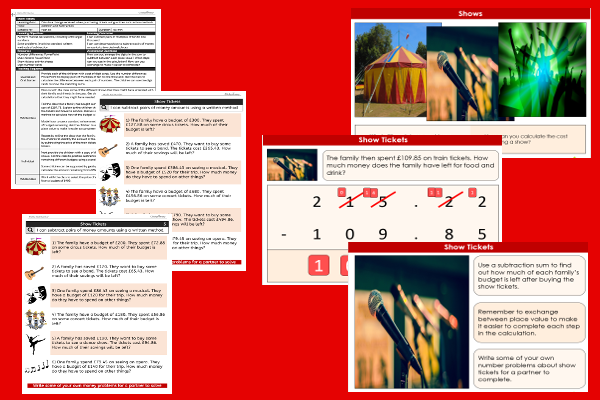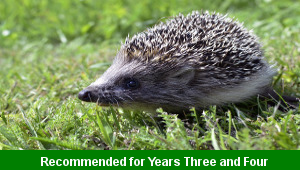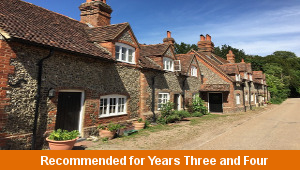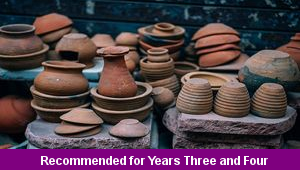Lesson Five – Show Tickets

This maths teaching pack for Key Stage Two gets the children to model and record how to calculate the change that will be received when purchasing tickets for different shows using written subtraction methods.
The class can practise using the calculation method of decomposition to subtract different pairs of money amounts to solve each number problem when working out the change received.
Download this teaching pack including a lesson plan, classroom activities and an interactive presentation to model and record how to calculate the change that will be received when purchasing tickets for different shows using written subtraction methods
Activities in this teaching pack include a differentiated set of worksheets to record how to calculate the change that will be received when purchasing a range of tickets for different shows using standard written methods of subtraction for decomposition.
The interactive presentation gets the children to explore how to calculate that change that will be received when purchasing tickets for different shows using written subtraction methods.
This lesson is part of a maths scheme of work to get the children to practise mental and formal written methods of addition and subtraction calculation working with different numbers in millions and decimals. There are teaching activities for shared learning, differentiated worksheets to support independent learning and interactive presentations to introduce concepts and key skills.
-

Classic Animal Stories
Investigate the structure and content of classic works of fiction by significant authors with animals as the main characters
-

Cities, Towns and Villages
Research and present the history of a range of different buildings and people that are part of the local community using a school exhibition
-

Recycling
Research and present some of the benefits and disadvantages that can be produced when recycling different materials at home and in school
-

Viking Pots
Develop and refine a range of different art and design techniques when working with clay to make pots that represent Viking culture and traditions
